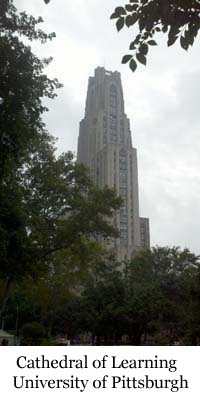 Flying back to Pittsburgh with an old Elmore Leonard in hand (The Big Bounce, 1969) jogged some memories. Our man Jack Ryan, someone pulled his chain, the same phrase an upperclassman used on me the first day on campus in August 1969 and the first time I'd heard it. You're in the big leagues now, boy.
Flying back to Pittsburgh with an old Elmore Leonard in hand (The Big Bounce, 1969) jogged some memories. Our man Jack Ryan, someone pulled his chain, the same phrase an upperclassman used on me the first day on campus in August 1969 and the first time I'd heard it. You're in the big leagues now, boy.
What a great English teacher the first semester and after a string of them in high school; the reading list as much as anything - he was a part-timer and probably wanted an excuse to read or reread some favorites. He had Swann's Way under his arm one day. For us it was Iris Murdoch (The Severed Head), Hard Times (Gradgrind!), and Middlemarch, the last my all-time favorite after many re-readings. I remarked in class one day that among the main characters in The Severed Head, almost every possible romantic combination had been consummated or at least entertained. He liked that and rejoined that two female characters were always touching each other, seemingly casually or mistakenly, he thought it was pretty funny. He was making the point with us one day that people can walk through their own lives as zombies without even noticing their remarkable surroundings, most appropriate in the immediate environment of Pitt with the amazing buildings. He said, consider the Civil War Museum, how many columns are there in front of it? Eight, I said (Math Department reporting). He was a little miffed, as if I'd interfered with his lesson.